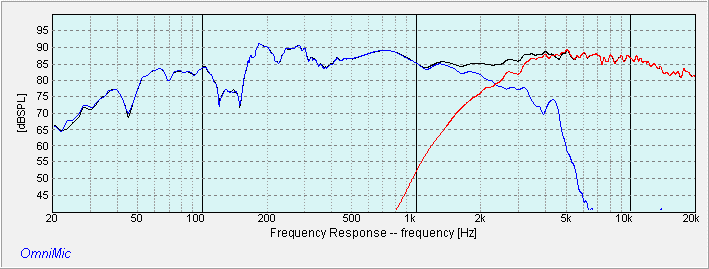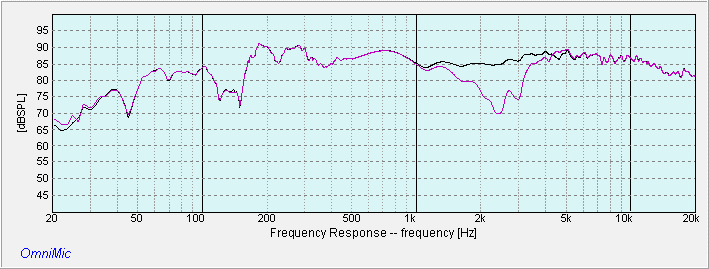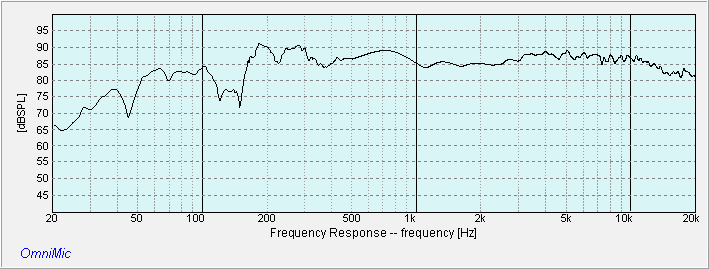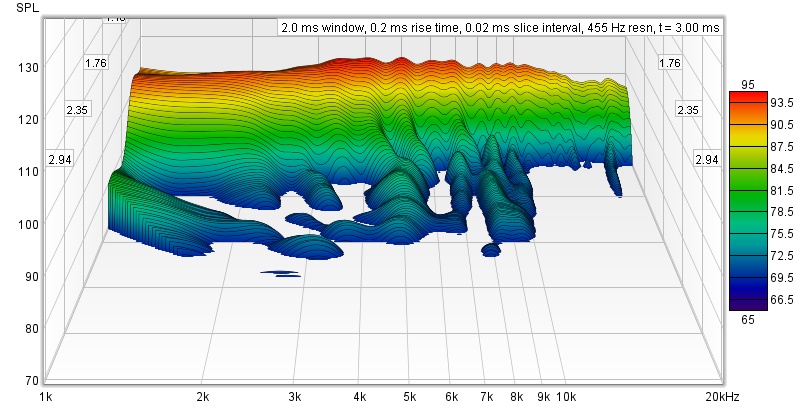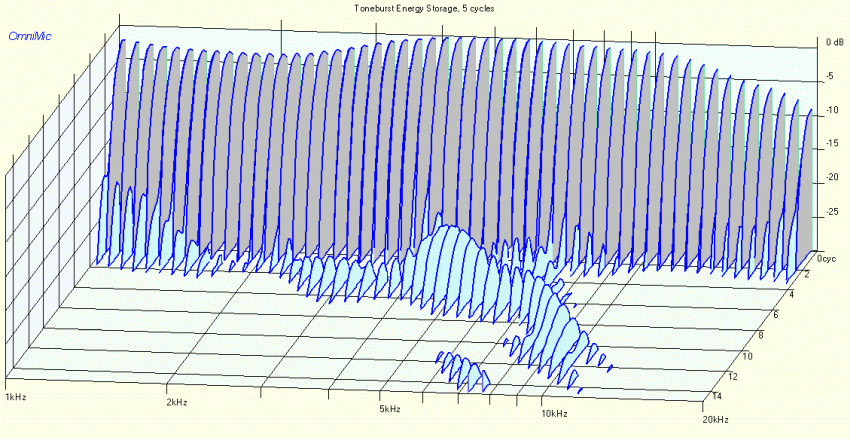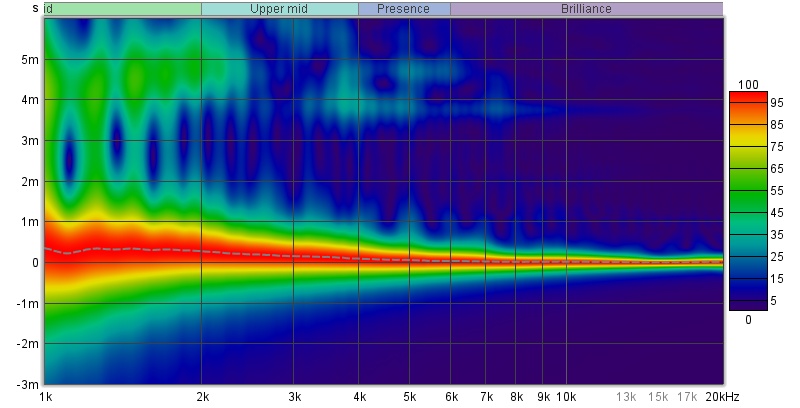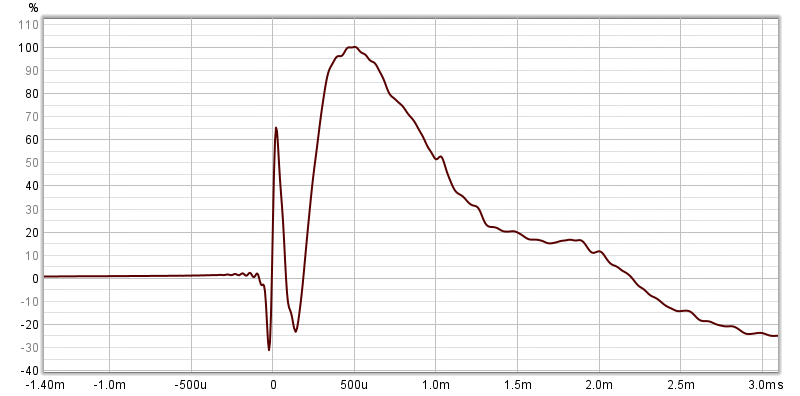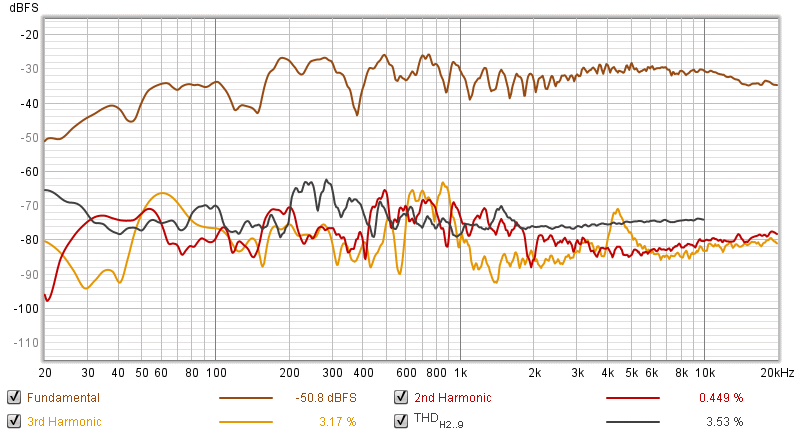|
Before I work on a passive crossover, I often listen to the drivers in an active system. This gives me an idea of what to expect, sound wise.
As I mentioned in my previous post, the optimal crossover frequency is at 2,500Hz. In the plots above, the Blue plot is the response of the GF180-4 with my 24dB/oct electronic crossover set at 2.5kHz. Compared to the RAW FR, the peak at 4.5kHz is now lower by 18dB.
The Red plot is the Peerless BC25TG15-04 tweeter at 2.5kHz HP. The region of summation is the Black plot. No cancellations are observed, so basically the two drivers are summing properly.
The violet plot is the “Null” response. The null is not as deep as I would like but it’s good enough for testing. Frankly, you won’t be able to tell the difference if I align the drivers.
The final frequency response of the active biamped GF180-4 with the BC25TG15-04 shows a fairly flat response. This plot is with the tweeter wired in reversed phase.
The Waterfall plot shows artifacts at 5kHz and 9kHz. Though they are recorded, they are not an issue. They don’t last long enough to be heard.
The Toneburst Energy Storage plot is another view of the artifacts. This time, they are the light blue slices. The bunch at 5kHz extending to 10kHz are those seen in the Waterfall. These artifacts are not from the tweeter. They are from the woofer cone breakup.
The Spectrogram is a 2D representation of the Waterfall and Toneburst plots. Now, the vertical axis is in the time domain. From this plot, we can see the treble is pretty clean. What is not so impressive is what’s below 2.5kHz. There are some strong green streaks emitting from 1kHz ~ 2.5kHz. Fortunately, they fizzle out by 6msec. It appears the GF180-4 cone is “ringing” just before the crossover point.
The Step response shows a typical decay in the GF180-4. We can infer from this that the awful step response of the GF180-4 in my previous post is from the cone breakup.
The Total Harmonic Distortion (H2~H9) is at an incredible 3.53%. This is high, even by my standards. I believe the bulk of it is from the GF180-4, possibly from the 500Hz~1kHz region. Strangely, that’s where the bump in the FR plot is.
Despite the less than stellar Total Harmonic Distortion figures, the speaker sounds fine. What is important is she did not irritate my ears while auditioning. Actually, there’s a bit of warmth in the music which I find quite pleasant. Contrary to popular belief, this should not be the case because the 3rd harmonics are at 3.17%. With the THD at 3.53%, it means the Distortion is mostly from the 3rd harmonics. And as we’ve all been told, the odd harmonics are the bad ones but my ears tell me otherwise. One of the pros of the GF180-4 woofer is the bass. She is not short of it. Don’t forget, I’m auditioning her in Full Space and her bass is loud enough. The attack is no where as fast as some of my high-end woofers but for $28, she’s really outstanding. I thought of pairing her with more expensive tweeters but for the best cost/performance ratio, the Peerless BC25TG15-04 ($23 at PE) is an ideal choice. Now that I’m comfortable with the sound of the GF180-4, I’ll proceed with a passive crossover. The difficult part here is whether I can keep the crossover parts down. Unless otherwise stated, all measurements were made in Full Space. Mic at 36 ins, tweeter axis. Impulse Window=5ms. No smoothing applied |

November 22, 2023Drivers Evaluation, HIFI DRIVERS
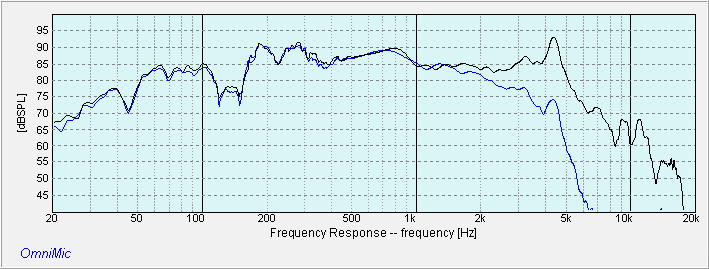 GF180-4 in 15 liters Bass Reflex • Baffle Width=8-3/4″ • Port DIA=2″, L=6-1/4″
GF180-4 in 15 liters Bass Reflex • Baffle Width=8-3/4″ • Port DIA=2″, L=6-1/4″